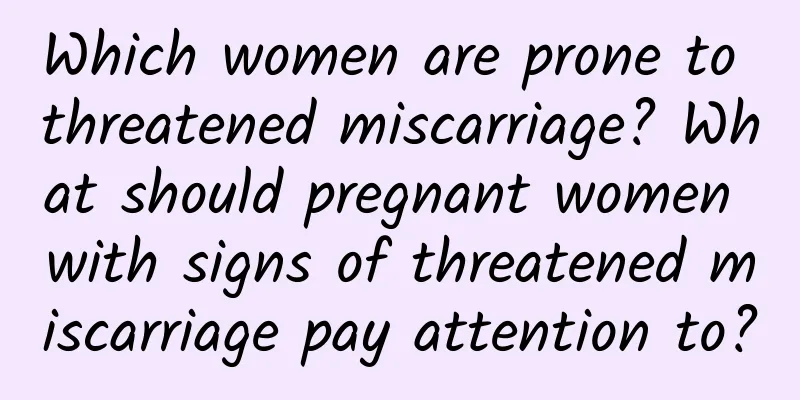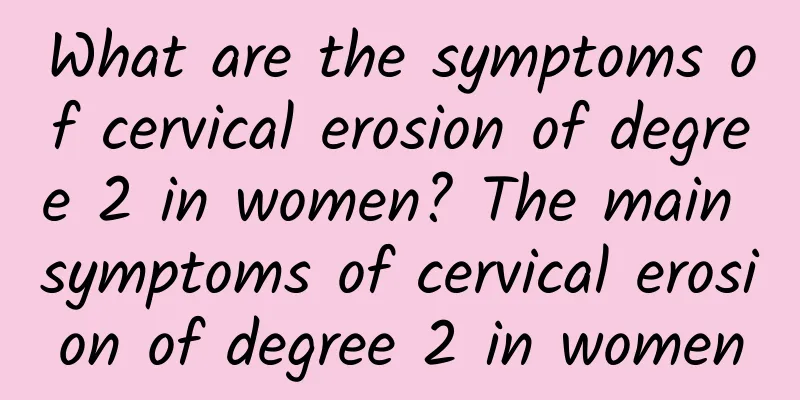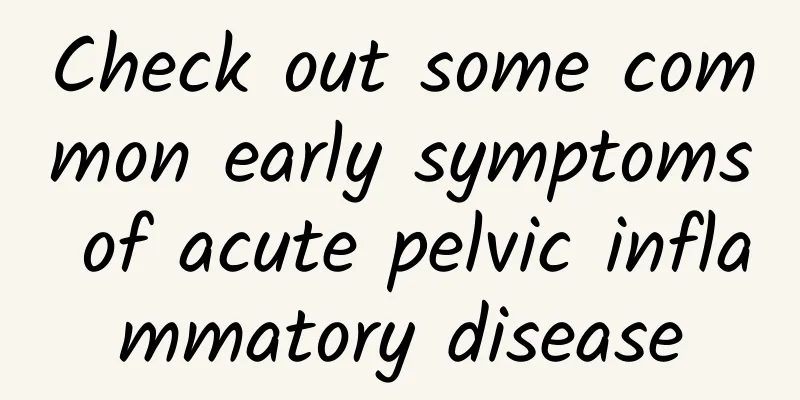Which women are prone to threatened miscarriage? What should pregnant women with signs of threatened miscarriage pay attention to?

|
Threatened abortion refers to a symptom in which the fetus fails to complete normal growth and development and falls out of the uterus on its own. There are many causes of miscarriage, such as infection, trauma, immune factors, etc., but some people are susceptible to threatened abortion. Threatened abortion can cause great damage to women's bodies, so it must be detected and treated as early as possible. Today, we invited Pan Ying, the attending physician of the First Affiliated Hospital of Jinan University, to explain to us about the susceptible population of threatened abortion, precautions and other issues. Which women are prone to threatened miscarriage? Women who are prone to threatened abortion symptoms can be divided into the following two categories: 1. Older women. The body functions of older mothers have declined, and their ovarian function may also decline to a certain extent, so they are more likely to have abortion symptoms. 2. Patients with gynecological diseases. When pregnant women suffer from diseases such as uterine fibroids, the environment in their uterine cavity will change accordingly, which makes it easier for pregnant women to have symptoms of embryo implantation failure or threatened abortion. What should pregnant women with signs of threatened miscarriage pay attention to? Threatened abortion is mostly caused by discomfort in the uterine cavity of pregnant women. When pregnant women fail to get pregnant, they need to undergo uterine curettage or abortion, which will damage the endometrium of pregnant women, which will affect the success rate of embryo implantation. Pregnant women with threatened abortion have different symptoms due to their different physical constitutions. Some pregnant women have bleeding as the main symptom of threatened abortion, and some pregnant women have abdominal pain, back pain, etc. as the main symptoms of threatened abortion. When is threatened miscarriage first detected? Theoretically, threatened abortion can occur as early as when the fertilized egg successfully implants in the uterine cavity, but in terms of clinical symptoms, most pregnant women experience threatened abortion on the 35th day after the last menstrual period. Some pregnant women experience symptoms of threatened abortion 20 days after pregnancy, but they are easily confused with menstrual symptoms. Therefore, pregnant women need to pay attention to the difference in bleeding between threatened abortion and menstruation to avoid delaying treatment. Threatened abortion not only causes physical damage to pregnant women, but also psychological pain. Therefore, it is recommended that women first do a check-up before preparing for pregnancy. If there are primary diseases in the uterus or other parts, they must be corrected first before preparing for pregnancy. If there are signs of threatened abortion, you should immediately seek medical attention for fetal preservation or abortion. In addition, the symptoms of abortion should also be distinguished from menstruation. |
<<: How long after a miscarriage can you wash your hair?
>>: Why did I not have my period in the first month after a miscarriage?
Recommend
What are the dangers of ovarian cysts?
What are the dangers of ovarian cysts? 1. The cli...
Experts introduce daily methods to prevent irregular menstruation
Irregular menstruation is a disease that may lead...
Why does cervical hypertrophy recur after being cured?
The treatment of cervical hypertrophy is already ...
What are the main precautions for vaginitis?
I believe that female friends know something abou...
Symptoms of spontaneous abortion due to cervical pregnancy
If a spontaneous abortion occurs due to cervical ...
What are the treatments for vaginitis?
What are the treatments for vaginitis? The treatm...
6 rules for firm abdominal muscles: snacks can also help
Simply losing weight is not enough, good weight l...
Experts introduce the symptoms of female menopausal syndrome
Menopause is a physiological process that every w...
What are the common symptoms of cervical erosion?
Many female friends are prone to cervical erosion...
Xiao Shushen's self-abuse to lose weight dizzy doctors: Be careful to gain weight again
"Topic Queen" Hsiao Shu-shen lost nearl...
What types of cervical erosion can be divided into according to the manifestations
Cervical erosion is a common condition of the fem...
Why can't you eat biscuits when you have uterine fibroids? Can you eat biscuits and bread when you have uterine fibroids?
Why can't people with uterine fibroids eat co...
Avoid starch minefields when exercising: Chicken shredded noodles with scientific method
When exercising, fitness enthusiasts often hear a...
How much does a painless abortion cost in Hangzhou
How much does a painless abortion cost in Hangzho...
What are the dangers of pelvic inflammatory disease to women?
Pelvic inflammatory disease is one of the common ...









